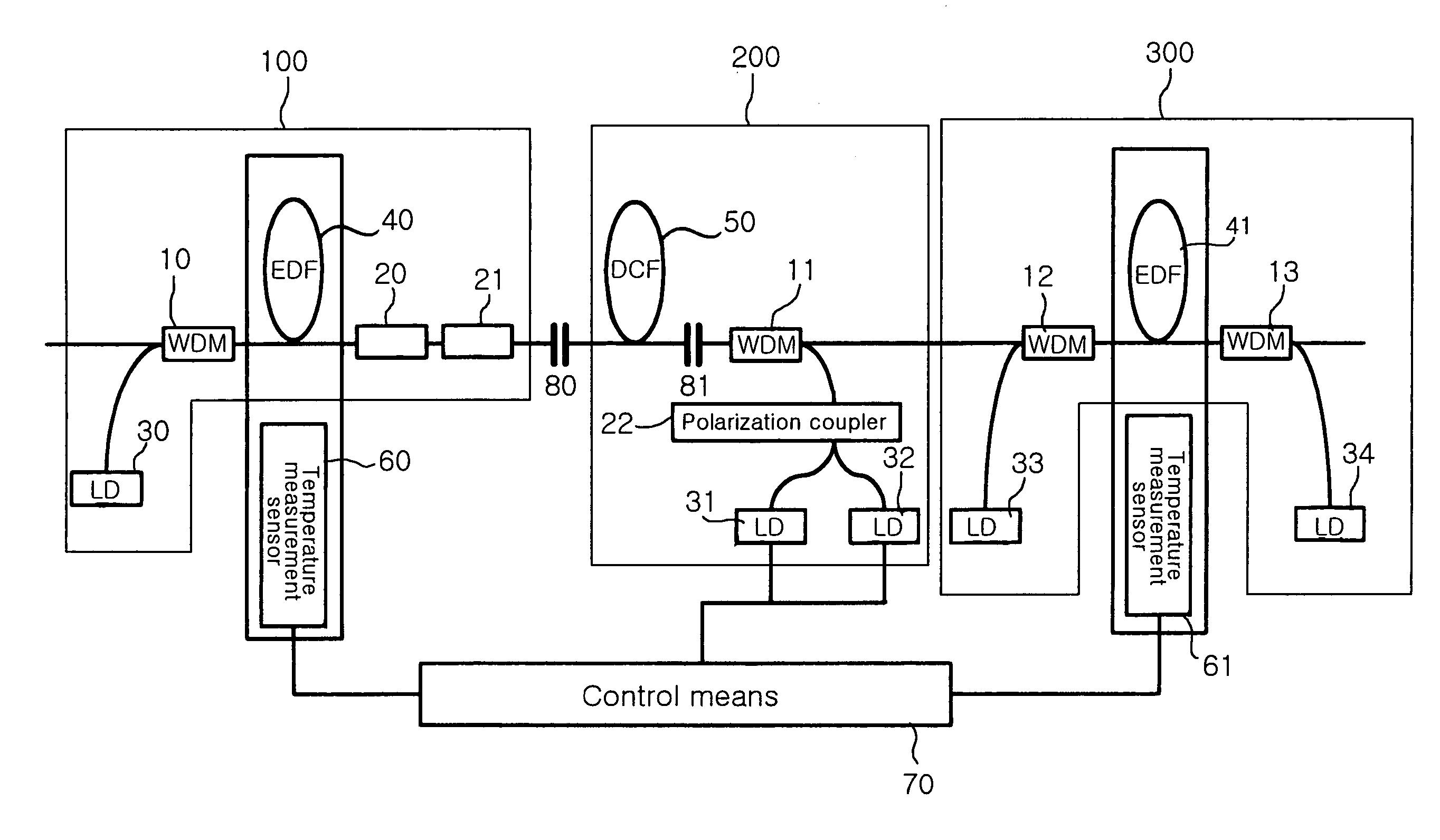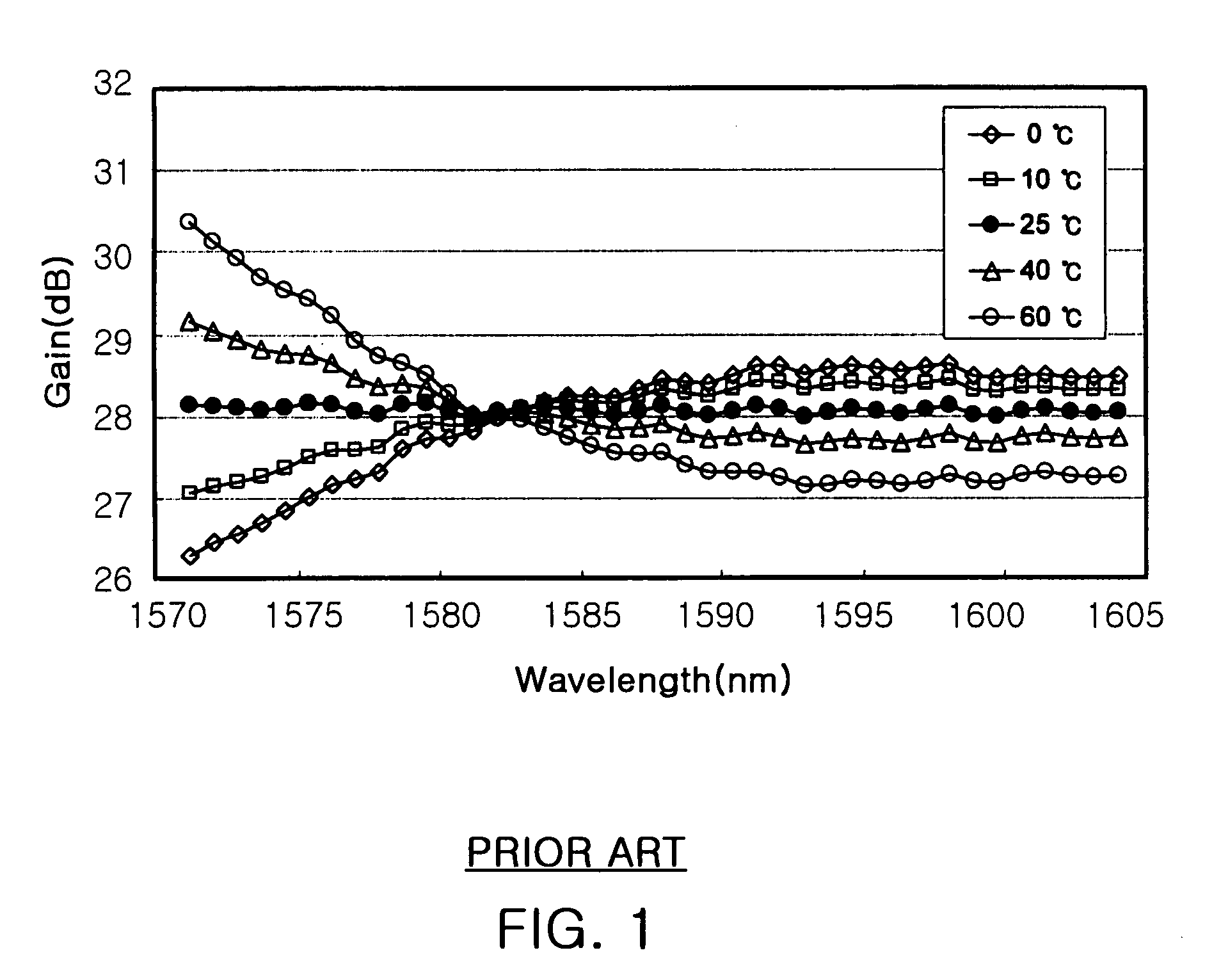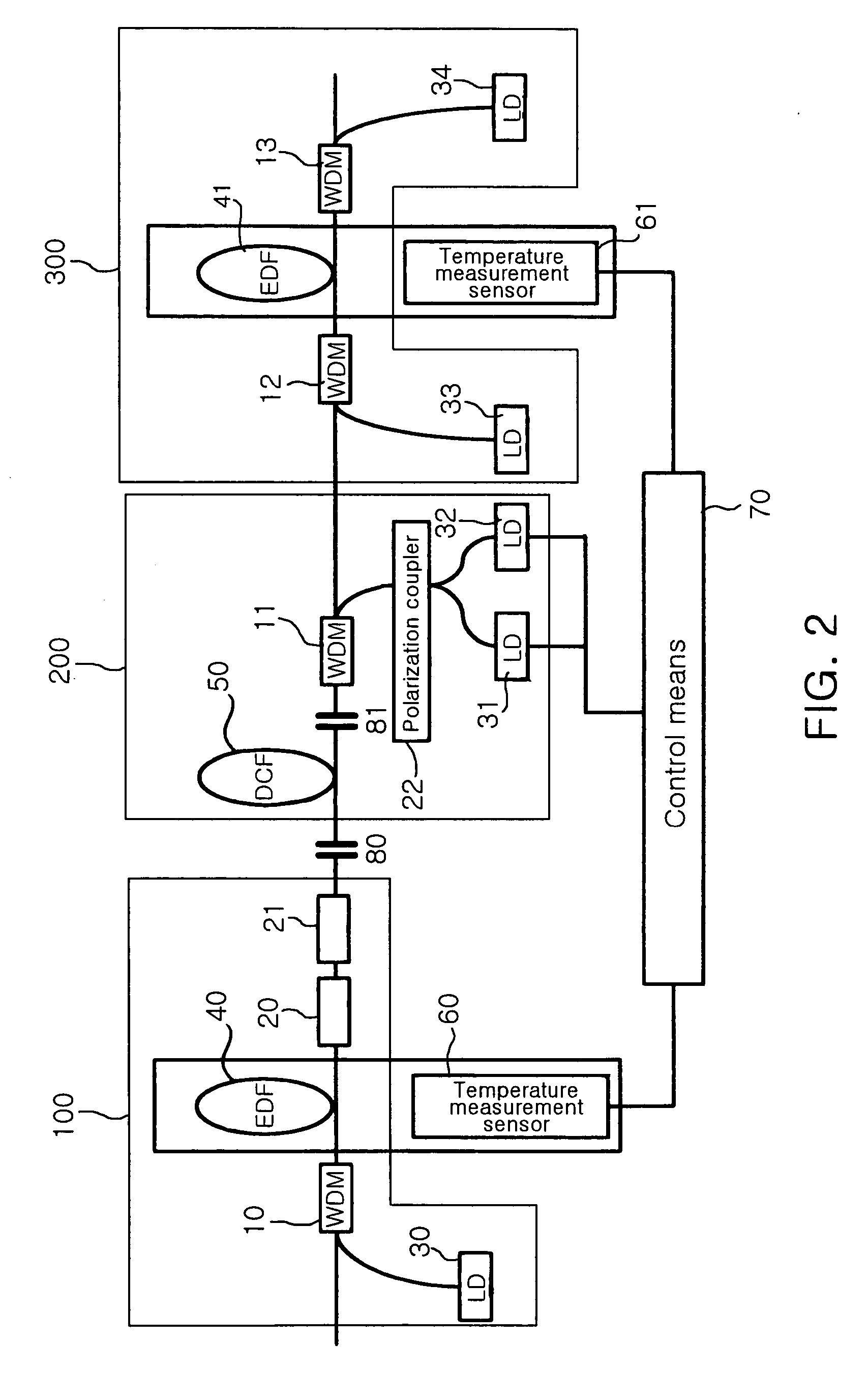Apparatus and method for gain-spectrum-tilt compensation in long-wavelength band dispersion-compensating hybrid fiber amplifier
a hybrid fiber amplifier and gain-spectrum tilt compensation technology, applied in the field of optical fiber amplifiers, can solve the problems of deteriorating amplifier signal quality, affecting the performance of amplifiers, and affecting the size of relatively bulky amplifiers, so as to suppress the polarization dependence of raman gain and reduce the degree of pumping light. polarization
- Summary
- Abstract
- Description
- Claims
- Application Information
AI Technical Summary
Benefits of technology
Problems solved by technology
Method used
Image
Examples
Embodiment Construction
[0027]Reference now should be made to the drawings, in which the same reference numerals are used throughout the different drawings to designate the same or similar components.
[0028]A preferred embodiment of the present invention is described in detail with reference to the accompanying drawings.
[0029]FIG. 2 is a configuration diagram of an L-band DCHFA equipped with a gain-tilt compensating apparatus in accordance with an embodiment of the present invention. The configuration shown in the drawing is an example of the gain-tilt compensating apparatus applied to an optical fiber amplifier and the L-band DCHFA equipped with the gain-tilt compensating apparatus. Reference numerals 10 to 13 designate wavelength-division multiplexers (WDMs), which combine the L-band optical signals and pumping light into a single optical fiber. In this case, reference numeral 10 preferably designates a WDM that combines 980-nm pumping light with the L-band signals and reference numerals 11 to 13 preferab...
PUM
 Login to View More
Login to View More Abstract
Description
Claims
Application Information
 Login to View More
Login to View More - R&D
- Intellectual Property
- Life Sciences
- Materials
- Tech Scout
- Unparalleled Data Quality
- Higher Quality Content
- 60% Fewer Hallucinations
Browse by: Latest US Patents, China's latest patents, Technical Efficacy Thesaurus, Application Domain, Technology Topic, Popular Technical Reports.
© 2025 PatSnap. All rights reserved.Legal|Privacy policy|Modern Slavery Act Transparency Statement|Sitemap|About US| Contact US: help@patsnap.com



